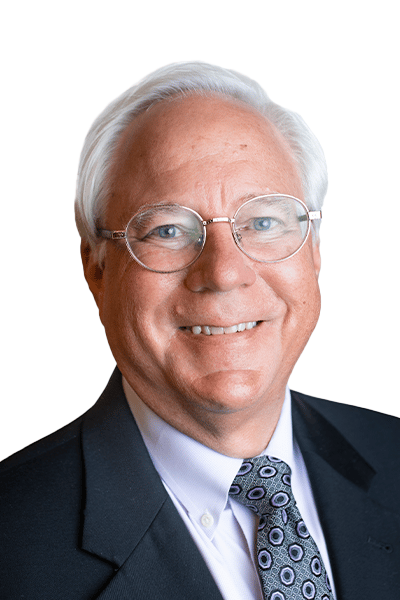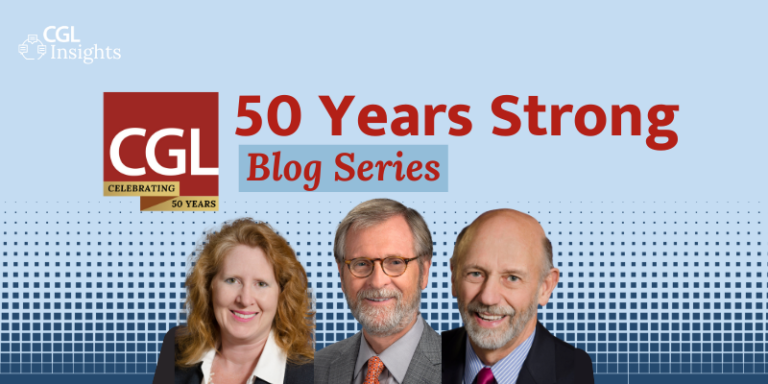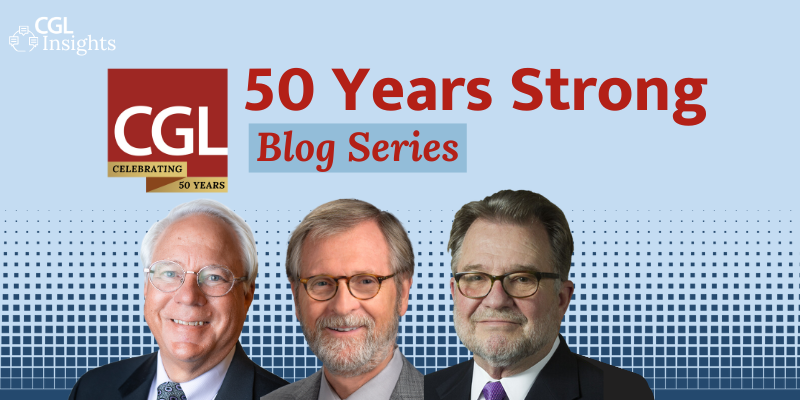
50 Years of Advocacy: How CGL Revolutionized Owner Representation in Justice
As part of our “50 Years Strong” series celebrating CGL Companies’ 50th anniversary, we’re exploring the rich history and growth of our various service lines. In our first two installments, we learned about the impressive journey of CGL’s planning and design services and how CGL redefined facility maintenance and management in justice.
In today’s post, CGL’s Deputy Director of Justice Services, J. Richard Davidson, AIA, sits down with Chief Operating Officer Joe E. Lee, PE and Executive Vice President Stephen A. Carter, AICP to reflect on the history of CGL’s owner representation service line and its integral role in the firm’s present-day success.
An Insightful Conversation with Steve Carter and Joe Lee on CGL’s Legacy in Owner Representation
As someone who has had the privilege of working alongside Steve Carter and Joe Lee for many years, I hold immense respect and admiration for their work and the legacies they’ve built in the justice community. Today, we learn about their journey into the world of owner representation and the impressive impact they’ve had over the decades as advocates and champions of their justice clients.
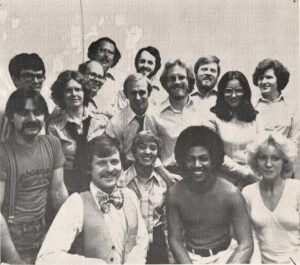
The firm at a holiday party in the early days.
Steve, thinking back to the early days of Carter Goble Associates, can you share with me the first project where you represented the owner’s interests from start to finish?
Steve Carter: It would have to be the South Carolina Department of Corrections master plan. That was a little less than two years into our existence. We responded to and won the South Carolina Department of Corrections plan, so it gave us an opportunity to start with their strategic thinking and take them through some basic programming approaches.
Then we were asked to follow on for many years after that and assist them in the development of the new facilities that came out of that master plan, so it’s probably our best example of being with a client from the very start to actually seeing the implementation of the plan.
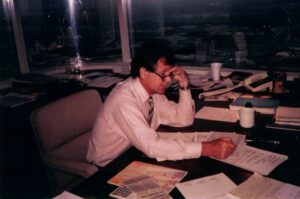
Steve Carter working on planning projects in his office in Columbia, South Carolina.
What were some of the challenges and successes you experienced on that project?
Steve Carter: History has a way of repeating itself. South Carolina had an ancient system; most of the facilities were approaching 100 years old. One of the challenges was simply that the infrastructure was wearing out.
This is in the early seventies, and the population was just beginning to build up. We hadn’t had the mass incarceration that we faced in the late ‘80s and ‘90s. But in those days, we were getting more people coming into the system than we were releasing, so we had a capacity issue and an infrastructure issue. They had been piecemeal-ing a few new renovations and one major new prison that was done in the state, but there was no comprehensive strategy.
We had a governor at that time who was really pushing hard, “Let’s think about this thing more strategically.” We had the opportunity to help lay out a framework for them. It was a great start because that led us to our next project – we had not dried the ink on the report before Arizona got in touch with us. They had heard through Bill Leeke, the commissioner in South Carolina at that time, that he liked his master plan. I got on an airplane, testified before the legislature in Arizona, and walked out of that testimony with the attorney general, who became the future governor, saying, “You just won this job,” and I was flat-out amazed. South Carolina really opened the door for us.
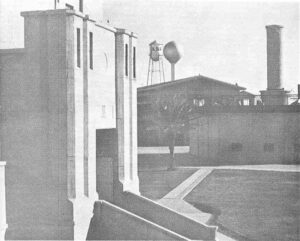
CGL’s early work in South Carolina led to winning the Arizona DOC Masterplan project. (Pictured: The Arizona State Prison in Florence, Ariz.)”
Did you even call it ‘owner representation’ back then?
Steve Carter: We didn’t. We didn’t start using a term close to “owner representation” until Nelson Meek joined us. Nelson was the director of the Capital Projects Division of the South Carolina Department of Corrections. When the plan was getting pretty far along in implementation, we asked Nelson to join us, and we established CGA Management, which Nelson headed up. Our first significant projects were the Arlington County Jail and the Allegheny County Jail. It was during that stage in the mid-80s where we began to call it ‘program management/project management,’ and it really was Joe who brought us into this idea of ‘owner’s representation,’ which is a much more 360-degree approach than what we were doing with program management.

Arlington County Jail (Left) and Allegheny County Jail (Right) were two of the firm’s first significant projects.
What was the first project where Carter Goble Lee provided the full package of services from start to finish?
Joe Lee: It was the four Georgia Department of Juvenile Justice (DJJ) Regional Youth Detention Centers (RYDCs). Steve and I had been working together a long time, and he had influenced me that operations drove design. The year before, we had been successful in getting the facility maintenance for the Department of Juvenile Justice.
This was a chance to really focus on the design and the construction of the facility—look at the total cost of ownership and examine the strategies for operating the building—so that it served the state’s mission and took care of kids in the right way. In fact, some of the nomenclature they use now, such as calling the juveniles ‘students’ and the whole change in their attitude about how they were treating kids at that time, came from this initial project.
Having the luxury of seeing it constructed in four different locations across the state of Georgia all at the same time, and then being able to maintain the buildings afterward, was gratifying from the standpoint that it met the mission and did what it was supposed to do. They haven’t had any trouble, and you haven’t heard anything regarding incidents from those four RYDCs to this date—and it’s been 22 years.
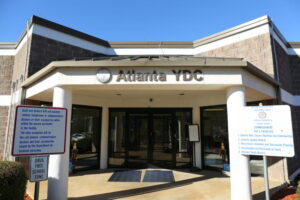
Georgia DJJ Atlanta RYDC
What did that experience teach you, Joe? How did it change the way you approached program management and owner representation after that?
Joe Lee: Well, there was a part missing, and that was doing the design criteria. We would do facility plans, space listings, operational narratives, and things that described it, but it didn’t quite get translated as well as it should when an architect took over the design. The owner’s representation part of it really homed in on making sure that the strategies that the planners came up with were really executed well in the design stage. That took some doing. A lot of times, by nature of the business, there were architects who hadn’t done one before. Getting the design criteria right—and having it explained in an operational format so that they knew how the building was supposed to operate and therefore could do a better job of designing it—was the biggest thing that came out of that venture.
Steve, was the expertise in owner representation and program management that Lee Design and Management had a big part of why you guys decided to join forces?
Steve Carter: It absolutely was, outside of the kind of chemistry that Joe and I had going back quite a few years before that.
The idea that we could bring to a client during the planning stages some concepts that we knew were implementable in a construction phase really began to distinguish CGL—or CGA at that time—from the rest of the justice community. We didn’t make this concept up; it just kind of naturally evolved through what Lee Design and Management brought to Bob Goble, myself, and our team that existed at that time, significantly broadening the disciplines that we could bring to a client.
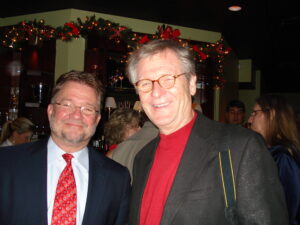
Joe Lee and Steve Carter
How exactly did teaming up change things for the company?
Steve Carter: At that time, our country was building a lot of correctional facilities. To say that, in one umbrella organization, you could get the planning, the forecasting side of it, the operational understanding, some of the basic design concepts – and now adding to that the constructability side and the maintainability side – was really quite unique, and it changed the whole direction of the company.
If you want to get into just dollars and cents here, without Joe and his team, I am convinced that CGA would’ve remained a $3–4 million-a-year company, and that would have been a struggle. We had good relationships with architectural firms, doing the programs for them and things like that. But we really would not have grown to even a fraction of where we are today, had we not had that relationship. It just expanded almost overnight.
I can still remember that initial lunch that I had with Joe at an ACA conference in San Antonio very well. It was during that lunch that Joe said, “If I could just get access to your Rolodex…” (laughs) Of course, nobody uses Rolodexes anymore, but he was very insightful to say, “Together, with what you all know and have already done, the possibilities are endless.” By this time, we were reasonably well-known in the industry, especially through the architectural community in our programming and operational planning work. Adding to that what Joe already knew and his contacts just seemed to make a whole lot of sense.
Without teaming up, we wouldn’t be anything like what we are. I wouldn’t even be on this call today. I don’t know what I’d be doing—probably working at Walmart as a greeter (laughs).
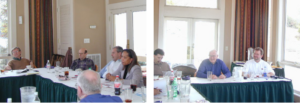
Team members gather during early Carter Goble Lee strategic meetings.
Joe Lee: Steve, do you remember—we were in, I think, Oconee, Georgia… I think we were at the first meeting after we had signed all the documents and all that stuff, and the tagline that Donna Lee came up with was ‘A World of Solutions.’ That tagline has come to roost.
Steve Carter: Absolutely ‘A World of Solutions,’ and she was hard on us. She said, “You know, you ought to sell every planning project as a program management project.” And she was absolutely right. We’ve come full circle now with our 360 Justice service offering.
You’ve always said CGL’s approach is unique. When did it hit you that what we were offering was something special in the justice community?
Joe Lee: I think we recognized it immediately because there were not many firms that could talk about all the things that we were focused on—all the different service lines that we were focused on—and bring that information to the development of a building. In fact, I don’t think there were any, and I don’t think there still are any. We set ourselves apart from the very beginning, and I think right now we’re positioned better than we ever have been in our history.
We’re the go-to people when others want to team with us. We’re also the go-to people for selecting us for facility maintenance. It’s a unique position to be in and a very gratifying one. Looking towards the future, it’s a great growth possibility.
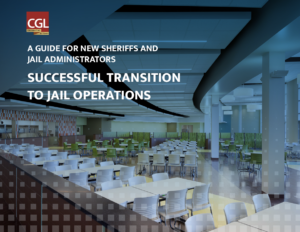
Assuming the leadership of a new detention or corrections facility can be a daunting task for a new sheriff or jail administrator. It’s a big responsibility that comes with many unique challenges. Click on the image above to download our “Successful Transition to Jail Operations Handbook” where you’ll learn best practices and recommended guidelines from experts who have experienced the process firsthand.
How did your planning approach impact the way you delivered owner representation and program management?
Joe Lee: It influenced it greatly because we weren’t just talking about bricks and mortar. We were trained to start from the operations side and go from there. That was different from everybody else, especially when we first got started. Everybody else was talking about bricks and mortar—”How fast can we do it?”—and we were talking about how to do it, how to manage the inmates, what programs they needed, what staff they needed, and so on, so that they were really prepared.
The difference in preparing a client to take over a facility, whether it’s a 500-bed or 4,000-bed jail or prison, is unbelievably hard. You have to start years before the building is open in order to get the mindset ready to operate these things, and that’s what we were doing. We were shepherding and making sure that we were taking care of our clients as if they were family, so that they could successfully operate these facilities safely and securely.

CGL’s experts were able to save Forsyth County $10M over a 20 year period. Click on the image above to download the case study and learn more.
How did getting into facility maintenance change the way you handled owner representation and program management?
Joe Lee: It was really interesting when we first got started. Nobody had any idea what they were spending on maintenance, not even the first clue. To be able to talk coherently about what impact design or construction had on maintenance costs for the next 30 or 40 years, we had to do a lot of research and had to call on a lot of our clients to give us information that they didn’t even care about.
It was like pulling teeth. We had to really get in there and understand. I’ll give you an example: the facility we did in Forsyth County. The decision to put one central energy plant rather than two—because these two facilities were across the road from each other—saved that county approximately $10 million over a 20-year period. It was half a million dollars a year. It’s a relatively small facility. If you take that and then you multiply it across some of these bigger facilities that we’re doing that are half a million square feet or a million and a half square feet, it’s a lot of money just on the energy side.
In another facility, we had the contractor build a concrete curb in the corridors where they were delivering food, laundry, and other services to the inmates because just preventing the damage of carts running into walls saved them $150,000 a year. There were things like that we brought up that nobody else was even talking about.
One of the Georgia Power people that we work with—I started talking to him about how much energy costs on a per square foot basis. He said, “You know, nobody talks like that.” I said, “What are you talking about?” And he said, “Everybody talks about how much a kilowatt-hour is and how many kilowatt-hours you’re spending, not how much it costs per square foot.” Over the years, I saw that whole mentality change to where people were talking about it from a planning, budgeting, ‘how can we save money?’ perspective.
How has technology and data analytics played a role in improving services over the years?
Joe Lee: Now, of course, we’ve got the computerized maintenance management systems that we can bring to the table and calculate: “If you do it one way, this is how much it’ll cost in maintenance costs; versus if you do it another way, this is how much it’ll cost in maintenance costs.”
There is a lot more specificity about every line that an architect or an engineer draws on a piece of paper and how much that costs for 30 years. It’s simply something that wasn’t being talked about 30 years ago.
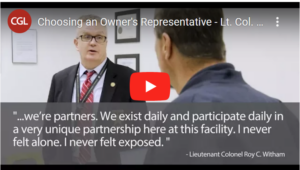
Selecting an owner’s representative with the right expertise can be the difference between success and failure. While Chief of Operations for the Richmond City Justice Center, Lieutenant Colonel Roy C. Witham faced a significant challenge – overseeing the successful delivery of the City’s new $135M justice facility to replace the rundown and overcrowded Richmond City Jail. Click on the video above to hear about his journey.
How have you seen things change over the years? Have projects gotten more complex since the early days?
Steve Carter: I think it’s gotten much more complex. There are no silver bullets on this thing, but CGL has really got a belt full of things that we have seen with us also getting very much involved in the international community. We’re seeing what others are doing and how they are responding to important justice questions.
I’ve just come from Singapore and the International Corrections and Prisons Association (ICPA) annual conference there. CGL is now recognized as a global leader in what we do. I think that’s in large part due to this marriage that occurred back in the 2000s where we brought the two groups together. It’s amazing the thought leadership that came out of both groups when you put that synergy and energy together. It was bound to be successful, and it was. The personalities that were involved were dedicated to being more than just a consulting firm – we really wanted to move the needle in corrections.
So, yes, to answer your question, I believe things have certainly gotten more complex from the operational side – from the design response to operations, and then the methods and means of how we’re going to build them and maintain them. But we are so incredibly well-positioned to be able to respond to a complex market, and I think it’s only going to continue getting more complex with technology. AI is going to be a key part of our future, and CGL’s going to get ready for that. AI is going to change the whole way that things get delivered, as well.
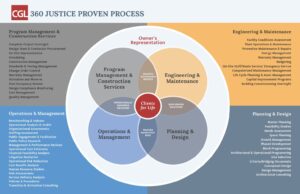
360 Justice: CGL’s services span an entire project and building lifecycle, providing the unique capability to help a client at any stage of the development process and well beyond completion.
Can you share an example where our 360 Justice approach really made a difference for a client? What made it work so well?
Joe Lee: The interesting thing is that there’s probably five or six projects where we did the full array of services for a client. Those clients, some of them have moved on to different places now, and they still use everything that we did on the project we were working for them where they are now.
We will get called in to help them because they know we’ve got the solutions, and if we don’t have the solution, we’ve got somebody in the firm that can go get the solution. The impact is exponential—how you’re adding not only contracts on top of each other but also contacts and recognition—to the point where we’re the go-to firm to point to and say, “You need to get those people to help you out.”
Steve Carter: Each one of us has one or two projects that we count as our legacy projects, where we really put our heart and soul into the project.

Las Colinas Women’s Detention and Reentry Facility (Left), Johnson County Courthouse (Right)
Two come to mind for me. The first one was the Las Colinas Women’s Detention and Reentry Facility in San Diego. We didn’t start out as the owner’s rep—we weren’t hired in that role initially. We were hired just as a planner to help them do a little master plan for the county and what their needs were. Over time—more than a 10-year relationship with them—we built our services into a situation where we were seen as an irreplaceable member of the client’s team. When the facility actually began to happen, we were in the position where the sheriff’s department said, “We wouldn’t want to go forward without you guys being a part of this. You brought us to the stage through two defeated bond issues and a community that didn’t really want us in there,” to the point where they broke ground and then built what has become an award-winning facility. We were with them every step of the way.
The second project, the Johnson County Courthouse, has many similarities. It took us a decade working with the client on many different planning studies, working for many different advisory committees set up by the County, and enduring several bond issue failures to arrive at a point where they said, “Yes, let’s go forward.” In both instances, what we learned is just ‘stick-with-it-ness’; that you sometimes have to fall down, get run over, and get back up—and that’s what we kept doing. We kept looking for another way. How do we accomplish this?
The takeaway from those experiences was you’ve got to stay around long enough to hear what the client is saying. Sometimes we’re not given that opportunity, but when given the opportunity, we need to listen closely and have the experience to say, “Well, have you thought about this? This is another way that you could go.” It’s how both of those projects wound up ever being implemented.
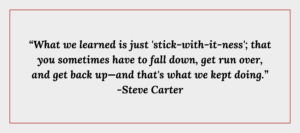
Reflecting on Our Journey and Looking Ahead
As we reflect on the remarkable journey of CGL’s owner representation service line, it’s evident that its success is built on innovation, collaboration, and an unwavering commitment to our clients. From the early days of the South Carolina Department of Corrections master plan to the transformative projects in Georgia and beyond, CGL’s successful track record in owner representation has shown that listening, adaptability, and a holistic approach are key to overcoming challenges and driving progress.
Looking ahead, we’re excited about the possibilities that technology, data analytics, and our 360 Justice approach hold for the future of owner representation. We’re committed to staying at the forefront of innovation, ensuring that we continue to provide unparalleled services that meet the evolving needs of our clients and society.
Stay tuned for our next installment in the “50 Years Strong” series, where we’ll explore the growth and impact of CGL’s operations and management consulting services.
